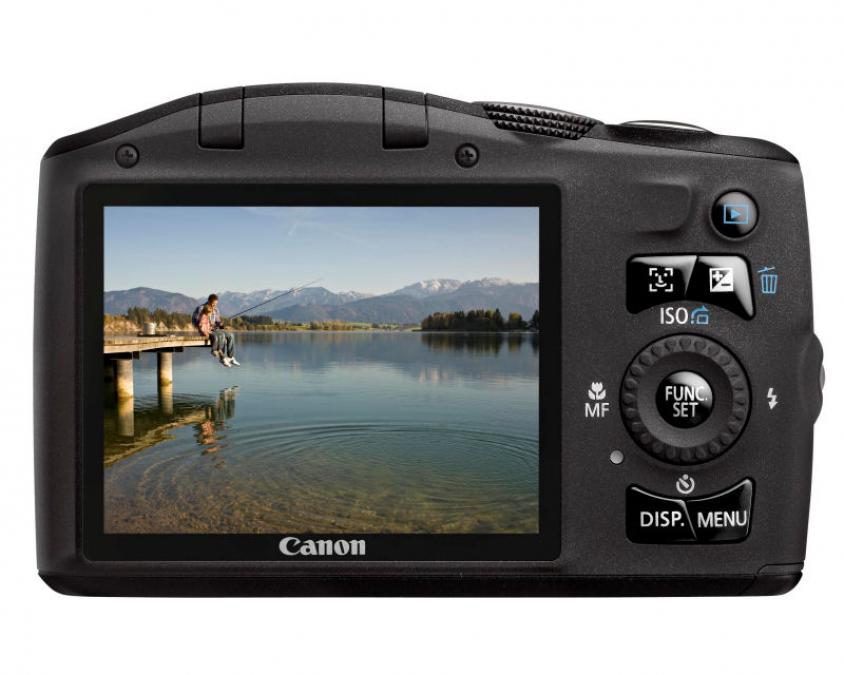To help us provide you with free impartial advice, we may earn a commission if you buy through links on our site. Learn more















Compact ultra-zoom cameras are perfect for people who want to expand their photographic horizons but don’t want to lug an SLR-shaped camera around. The Canon SX130 IS is amongst the cheapest ultra-zoom compacts, undercutting most rivals by £50 to £100. It’s not completely without company at this price, though. The excellent Samsung WB600 has fallen in price since we reviewed it and is now available for around £150 too.
Although the WB600 shows few signs of cost-cutting, the SX130 IS’s budget price is more obvious. Its batteries are the main giveaway. We used to think of AA batteries as a mixed blessing but these days we’re less forgiving. The advantage is that it’s cheap and easy to buy additional batteries. In practice, the downsides are more significant. AA batteries are heavier, bulkier and more hassle to charge than a Li-ion cell. They also make flash photography very slow – full-power flash shots were 15 seconds apart in our tests. We found that the SX130 IS warned of low batteries for a long time before they actually ran out. It’s not a disaster but it was a little distracting. It’s also important to note that rechargeable batteries and a charger aren’t included in the box. By the time you’ve budgeted for them, the SX130 IS costs around £20 more than the WB600.
The camera itself is much larger and heavier than other compact ultra-zoom cameras. At 46mm from its lens to its screen, it’ll only fit into generously proportioned pockets. The bulbous plastic design feels reassuringly solid but it’s no looker.

The upside of the big, curvy design is that it’s extremely comfortable to hold, with a raised metal grip on the front allowing stable one-handed shooting. It also provides room for lots of controls alongside the spacious 3in screen. Face detection and exposure compensation get dedicated buttons, and we’re happy to see that ISO speed is easily accessible by pressing the top of the navigation pad. The pad doubles as a wheel, speeding up operation where large changes to settings are needed, such as shutter speed or focus. The wheel’s design could be better though – the pressure needed to rotate it sometimes resulted in us pressing it in, inadvertently selecting one of the four button functions.
The other controls are well suited to photography enthusiasts. Manual and priority modes give precise control over exposure, and the preview image gives an accurate prediction of how bright the resulting photo will be. The small 1/2.3in sensor and f/3.4- 8 aperture range mean there’s not much scope for playing with depth-of-field effects, though. Manual focus is included, and a momentary digital zoom function helps with fine tuning. We like how the pop-up flash must be raised manually, as it means there’s no chance of it firing unless the user wants it. It’s also good to see Canon’s older menu system in place. It presents a static list of options down the side of the screen, which we find much easier to navigate than Canon’s new Ixus menus with their animated scrolling lists.

We’ve mentioned that flash photography is frustratingly slow; sadly, the SX130 IS isn’t much better in other situations. 2.7 seconds to power up and shoot is respectable but 2.8 seconds between shots is less so. The continuous mode trundles along at 0.6fps, which makes it hardly worth using.
That’s surprising, as this camera isn’t short of processing power – videos are recorded at 720p resolution in the processor-intensive AVC format. Quality was excellent, with working zoom and autofocus, stereo sound, a clear, sharp picture and reasonably controlled noise in low light. The autofocus sometimes got a little confused at close range, though, throwing the scene completely out of focus as it attempted to track moving subjects.
The SX130 IS put in a solid performance in our photographic tests, too. Lens sharpness was excellent throughout the zoom range, despite some chromatic aberrations towards the corners of frames. Details were crisp without looking over-processed, and colours were consistently natural and balanced.
We’re not fans of the 12-megapixel, 1/2.3in sensor design used here, as the enormous resolution usually boosts noise levels more than details. It’s almost impossible to avoid this problem in the current range of compact ultra-zoom cameras, though. Compared to the Samsung WB600 and more expensive rivals, the SX130 IS’s photos in low light were a little smoother and sharper, only losing significant ground to the much pricier Canon Ixus 1000 HS.

The fully automatic mode limited the ISO speed to 800, and while this demanded a steady hand indoors, the resulting pictures were up to scratch. Whereas most rival cameras’ photos at ISO 400 and above looked, grainy, blotchy or spidery when viewed up close, the SX130 IS’s shots were a little soft but reasonably smooth and natural (see our gallery, above, for examples).
It’s great that Canon has produced a camera that undercuts its rivals on price and surpasses many of them on image quality. The quality advantage over the WB600 is subtle, though. For us, the camera’s bulk and the inconvenience of its AA batteries are more significant. It’s not quite a five-star camera, then, but for those with small metaphorical pockets and deep physical ones, it’s an excellent choice.





